The Hunchback of Notre Dame

Brief Synopsis
Cast & Crew
William Dieterle
Charles Laughton
Sir Cedric Hardwicke
Thomas Mitchell
Maureen O'hara
Edmond O'brien
Film Details
Technical Specs

Synopsis
Ignorance, cruelty and superstition pervade France of the fifteenth century. Frollo, the King's high justice, exploits these evils, persecuting the gypsies and opposing any mode of progress. When the lovely gypsy dancer Esmeralda is threatened by the King's men, she seeks refuge in a church, Notre Dame, where she meets the grotesque hunchback Quasimodo. Frollo, who is Quasimodo's guardian, orders the hunchback to take the girl captive, and Esmeralda, terrified, escapes to the underworld of Clopin and his beggars. There, she saves the life of the poet Gringoire by consenting to take him as her husband, although she truly loves the soldier Phoebus. Frollo lusts after Esmeralda, however, and, unable to tolerate her love for Phoebus, kills his rival. Esmeralda is arrested for the crime, and Frollo, claiming that the girl had bewitched him with the power of Satan, demands her life. As Esmeralda is marched to die on the gallows, Quasimodo leaps from the building above and carries her to the sanctuary of the church. Not to be denied Esmeralda's life, Frollo incites the nobles to deny sanctuary, and the beggars, concerned for the girl's safety, storm the church. Amid the chaos, Frollo enters the church. Justice is finally served as Quasimodo hurls Frollo to his death from the bell tower.

Director
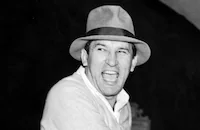
William Dieterle
Cast
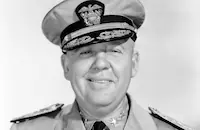
Charles Laughton

Sir Cedric Hardwicke

Thomas Mitchell
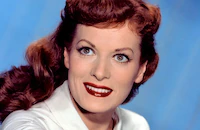
Maureen O'hara

Edmond O'brien
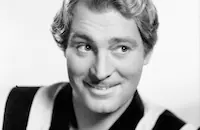
Alan Marshal

Walter Hampden
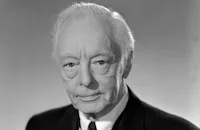
Harry Davenport

Katharine Alexander

George Zucco
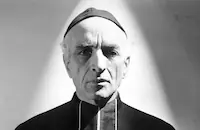
Fritz Leiber

Etienne Girardot
Helene Whitney

Minna Gombell
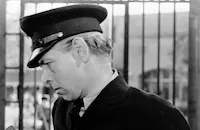
Arthur Hohl

Curt Bois

George Tobias
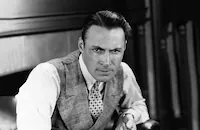
Rod La Rocque
Spencer Charters
Kathryn Adams
Diane Hunter

Siegfried Arno

Peter Godfrey
John Fowler
Hector Sarno
Joe Mack
Harry Vejar
Dewey Robinson
Ferdinand Munier
Gretl Sherk
Edward Groag
Vallejo Gantner
Thom Fox
Louis Adlon
Charles Hall
Robert Schiller
Otto Hoffman
Lionel Belmore
Rudolph Steinbeck
Ray Long
Arthur Dulac
Tempe Pigott
Dick Dickinson
Alan Spear
Ward Shattuck
Earl Clyde
Harold Degarro
Louis Valaris
Antonio Pina
Consuela Melandez
Eddie Abdul
Vangie Beilby
Elsie Prescott
Gisela Werbiseck
Al Herman
Angela Molinos
Victor Kilian
Arthur Millett
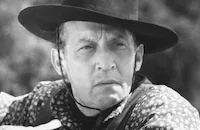
Raymond Hatton
Russ Powell
James Fawcett
Barlowe Borland
Paul Newlan
Margaret Mcwade
Margaret Seddon
Lillian Nicholson
Ione Reed
Marie Bodie
Archie Butler
Jack Perrin
George De Normand
Eddie Dew

Charles Drake
Harry Fleischman
Fred Mellinger

Louis Jean Heydt

Gail Patrick

Laura Hope Crews
Rube Schaffer
Victor Metzetti
Billy Jones
Frank Mills
Walter O. Stahl
Cecil Weston
John Laird
Richard Clayton
Lew King
Bud Fine

Nestor Paiva
Ted Lorch
Harry Weil

Alexander Granach
George Souzanne
Gene Clark
John Lawrence
George Barrows
Mary Lou Wentz
Laurie Hale
Louis Williams
Eleanor Pellapreau
Crew
Ray Atchley
Michael Audley
Joseph H. August
George Bax
Pandro S. Berman
Peter Berneis
Bill Brennan
Dick Crockett
J. R. Crone
Murray Darcy
Ned Davenport
Rudi Feld
Bruno Frank
William Hamilton
Al Herman
Edward Killy
Sonya Levien
Edna Marisle
Ernst Matray
Frank Mills
Gale Mogul
Grace Moody
Argyle Nelson
Alfred Newman
Jack Paul
Walter Plunkett
Van Nest Polglase
Erich Pommer Jr.
Will Price
Carda Rae
Raida Rae
David Robel
Sue Shannon
Darrell Silvera
Hope Taylor
John E. Tribby
Louis Vandenecker
Sailor Vincent
Vernon L. Walker
Perc Westmore
Robert Wise

Photo Collections
Videos
Movie Clip




Trailer
Hosted Intro





Film Details
Technical Specs

Award Nominations
Best Score
Best Sound
Articles
The Essentials - The Hunchback of Notre Dame
Fifteenth century Paris is a city of contrasts with an aristocracy living in glittering luxury while the poor endure almost unimaginable squalor and all the while the church offers spiritual salvation while its leaders wallow in corruption and decadence. Those contrasts come to a head when Quasimodo, the deformed bell ringer at the Cathedral of Notre Dame, falls in love with the beautiful gypsy Esmeralda. Their doomed relationship plays out against a city ready to erupt from class rivalries and the machinations of Esmeralda's most ardent and powerful suitor, the brother of the Cathedral's Archdeacon.
Director: William Dieterle
Producer: Pandro S. Berman
Screenplay: Sonya Levien, Bruno Frank
Based on the novel Notre Dame de Paris by Victor Hugo
Cinematography: Joseph H. August
Editing: William Hamilton, Robert Wise
Art Direction: Van Nest Polglase
Music: Alfred Newman
Cast: Charles Laughton (The Hunchback), Cedric Hardwicke (Frollo), Thomas Mitchell (Clopin), Maureen O'Hara (Esmeralda), Edmond O'Brien (Gringoire), Alan Marshal (Phoebus), Walter Hampden (Claude), Harry Davenport (Louis XI), Katharine Alexander (Mme. De Lys), George Zucco (Procurator), Fritz Leiber (A Nobleman), Etienne Girardot (The King's Physician), Minna Gombell (Queen of Beggars), Rod La Rocque (Phillippo), Spencer Charters (Court Clerk), Rondo Hatton (Ugly Man), Louis Jean Heydt (Bit), Victor Kilian (Hangman), Elmo Lincoln (Bit), Nestor Paiva (Man in Street), Tempe Pigott (Madeleine)
BW -115 m.
Why THE HUNCHBACK OF NOTRE DAME is Essential
Charles Laughton's biographer, Simon Callow, has called The Hunchback of Notre Dame (1939) the actor's last great screen performance, certainly the last in which he endured physical hardship and tapped his most painful inner conflicts to create a character.
Released in 1939, the film is one of an amazing lineup of movies - including Gone With the Wind, The Wizard of Oz, Wuthering Heights, Mr. Smith Goes to Washington and Gunga Din - that have earned that year a reputation as the greatest in Hollywood history.
Despite the Hollywood ending, this is often cited as the best screen version of Victor Hugo's classic story. Critics usually credit the lavish production design, literate script, strong cast and direction and, particularly, Laughton's extremely sympathetic performance in the title role, as reasons why the movie has enduring appeal.
The Hunchback of Notre Dame was the last produced at RKO Studios by Pandro S. Berman before he left for MGM. His pictures at RKO, many uncredited, included the earliest films with Katharine Hepburn and the first Fred Astaire-Ginger Rogers musicals.
This was the last RKO release of the '30s, an era when the studio was at its height. It was also one of the biggest and most successful productions of the studio's most successful year, 1939.
The Hunchback of Notre Dame marked the first U.S. screen appearance of Maureen O'Hara, a protégée of Laughton's since her appearance in Jamaica Inn (1939); the film debut of Edmond O'Brien, a stage actor who had worked with Orson Welles and John Houseman's Mercury Theatre; and the talking film debut of legendary stage actor Walter Hampden, whose interpretation of Cyrano de Bergerac is considered the most famous of all American theatre productions.
by Frank Miller

The Essentials - The Hunchback of Notre Dame
Pop Culture 101 - The Hunchback of Notre Dame
A year later, James Cagney appeared in a reconstruction of the Lon Chaney silent in the Chaney biopic Man of a Thousand Faces (1957). Perc Westmore, who had created Charles Laughton's makeup, designed a scaled down version for Cagney.
Other big-screen remakes include a Japanese version from 1957 and a 1973 Filipino film. The film also inspired the teen comedy Big Man on Campus (1989) and the French film Quasimodo d'El Paris (1999), which sets the story in a modern small town where Quasimodo is suspected of being a serial killer.
Quasimodo first reached television in a 1976 BBC telefeature starring Warren Clarke and Michelle Newell. Anthony Hopkins took on the role in a Hallmark Hall of Fame production in 1982, with Derek Jacobi as Frollo and Lesley-Anne Down as Esmeralda. Mandy Patinkin, Richard Harris and Salma Hayek played the same roles in a 1997 adaptation titled The Hunchback for TNT. Other television versions include a 1986 animated cartoon from Australia and the 1996 cable film The Halfback of Notre Dame.
Disney released a full-length animated version of the story in 1996 with Tom Hulce voicing Quasimodo and Demi Moore as Esmeralda, Kevin Kline as Phoebus and Jason Alexander, Charles Kimbrough and Mary Wickes as friendly gargoyles. The studio has announced plans to turn the film, with songs by Alan Menken and Stephen Schwartz, into a Broadway musical.
by Frank Miller
Pop Culture 101 - The Hunchback of Notre Dame
The Big Idea - The Hunchback of Notre Dame
The 1836 opera La Esmeralda, with music by Louise Berlin and a libretto by Victor Hugo, was the first stage version of the great work. It would be followed by Arthur Goring Thomas' 1847 opera Esmeralda, Dargomyzhsky's 1847 opera of the same name and Franz Schmidt and Leopold Wilk's 1914 Viennese romantic opera Notre Dame.
Hugo's novel was filmed five times as a silent. The first version, in 1905, was directed by pioneer Alice Guy as Esmeralda, with Denise Becker in the title role and Henri Vorins as Quasimodo. That version was only one reel (approximately ten minutes) long. The book's original title came back for the three-reel version shot in 1911, with Henri Krauss and Stacia Napierkowska in the leads. That version was praised for drawing a coherent narrative out of the novel and maintaining the original tragic ending. 1917 marked the story's first Hollywood adaptation entitled The Darling of Paris with legendary silent screen vamp Theda Bara as Esmeralda and Glen White as the bell ringer. An English version named Esmeralda appeared in 1922 with Sybil Thorndike in the title role and Booth Conway as Quasimodo.
Lon Chaney created one of his most memorable characterizations in 1923 for the first version titled The Hunchback of Notre Dame. Patsy Ruth Miller co-starred as Esmeralda with Wallace Worsley directing. The film was praised for its lavish sets and Chaney's extensive makeup and his sensitive performance, which catapulted him from character actor to super star. It also set the standard for lavish horror films in the silent era, followed by Chaney's epic 1925 The Phantom of the Opera. The film ended with Esmeralda saved from hanging but Quasimodo dying from a fatal stab wound sustained when he turns on Frollo.
In 1932, Universal Pictures announced that they had hired John Huston to write the treatment for a re-make to star Boris Karloff. Nothing ever came of the project. MGM also considered a film version starring Peter Lorre in 1937.
The idea of casting Charles Laughton as Quasimodo was first broached by MGM's Irving G. Thalberg in 1934, when his wife, Norma Shearer, befriended the actor while they were working on The Barretts of Wimpole Street (1934). It was one of the productions he would have mounted had he lived to start his own independent production company, with Laughton as one of his first contract stars.
The re-make of The Hunchback of Notre Dame was a pet project of RKO Studios' producer Pandro S. Berman; he was trying to raise the studio's profile in Hollywood, where it was beginning to develop a reputation as a studio whose own productions took a backseat to the work it released from independent producers like Walt Disney and David O. Selznick. Although Victor Hugo's novel was in the public domain, the studio still paid $135,000 for the story rights from the Chaney version.
Bela Lugosi, Claude Rains, Orson Welles, Robert Morley and Lon Chaney, Jr. were among the actors considered for the title role before he chose Laughton. One reason so many other actors were being considered was that Laughton was not available at first as he was negotiating with MGM for a film version of Cyrano de Bergerac. When that project fell through, he signed to play Quasimodo.
At Laughton's insistence, Maureen O'Hara, who had been his leading lady in Jamaica Inn (1939), was signed to make her U.S. film debut as Esmeralda. RKO put the 19-year-old under contract and began giving her the star build-up.
Berman borrowed William Dieterle from Warner Bros. to direct the film because of his facility with historical films (The Story of Louis Pasteur in 1935 and The Life of Emile Zola in 1937). Dieterle had also started as an assistant to German stage director Max Reinhardt, whose lavish productions of Oedipus Rex and Everyman had made theatre history.
At Laughton's insistence, RKO borrowed make-up man Perc Westmore from Warner Bros. at a cost of $10,000.
Writer Bruno Frank did the first adaptation of the novel before Sonya Levien was assigned to finish the writing. In preparing the script, Levien played up the original novel's political commentary about the gap between the aristocracy and the poor. With World War II looming in Europe and word filtering in about Nazi persecution of the Jews, the gypsies in the film were treated as a metaphor for the oppressed peoples of the time.
One concession the studio had to make to the Production Code was turning Frollo, Quasimodo's benefactor and the film's villain, from the Archdeacon of Notre Dame to the Archdeacon's brother. The Code forbade unflattering portrayals of the clergy and would not have passed the film had Frollo remained a priest.
by Frank Miller
The Big Idea - The Hunchback of Notre Dame
Behind the Camera - The Hunchback of Notre Dame
Van Nest Polglase reconstructed medieval Paris in a lavish set built on location in the San Fernando Valley. The cathedral stood 190 feet high and included gargoyles, vaulted ceilings and stained glass windows, all at a cost of $250,000. Polglase also incorporated scenic pieces from Lon Chaney's silent version.
To turn Charles Laughton into the deformed bell ringer, Perc Westmore covered half his face with sponge rubber, adding a protruding eyeball lower than the average. Laughton's other eye was covered with a milky contact lens. The hump consisted of an aluminum framework stuffed with four pounds of foam rubber, and the rest of Laughton's torso was padded with rubber to create a sense of the muscles developed from pulling on the bell ropes. It took two and a half hours to apply the makeup.
To convincingly play a character deafened by the ringing of the cathedral bells, Laughton had his ears plugged with wax so he couldn't react to any unexpected sounds.
On the first day of shooting, director William Dieterle assembled a crowd of extras in front of the cathedral set and called for Laughton. The actor, in full costume and makeup, protested that he wasn't ready to play the scene yet and couldn't shoot that day. Dieterle said, "Please, Charles, the next time you are not ready, let me know it previously so I can plan accordingly."
The Hunchback of Notre Dame was filmed during one of the hottest summers in recent history, with temperatures regularly topping 100 degrees as Laughton labored under the heavy makeup and costume. It was so hot at night, he had to sleep in wet sheets to keep cool, and the moisture usually evaporated within minutes. On top of that, he had to be at the studio by 4 a.m. each day to get into the makeup.
For the scene in which Quasimodo is whipped, Laughton instructed an assistant director to twist his ankle outside of camera range so he would really be in pain. Even through the heavy hump and rubber body suit, he felt every lash and often came home badly bruised. Before the 16th take, Dieterle whispered to him, "Now, Charles, listen to me. Let's do it one more time, but this time I want you...I want you to suffer." According to Laughton's wife, Elsa Lanchester, the actor never forgave him for that.
The scene in which Quasimodo rings the cathedral bells for Esmeralda was shot the day World War II began in Europe. The director and star were so overwhelmed, the scene took on a new meaning, with Laughton ringing the bells frantically and Dieterle forgetting to yell "cut." Finally, the actor just stopped ringing when he became too tired to continue. Later, Laughton said, "I couldn't think of Esmeralda in that scene at all. I could only think of the poor people out there, going in to fight that bloody, bloody war! To arouse the world, to stop that terrible butchery! Awake! Awake! That's what I felt when I was ringing the bells!"
As part of the film's publicity buildup, RKO Studios did not allow any publicity photos of Laughton in makeup for his character.
The Hunchback of Notre Dame premiered as the Christmas attraction at the Radio City Music Hall, triggering complaints from some critics who viewed it more as a horror film than an historical spectacle and considered it too frightening for family audiences.
by Frank Miller
SOURCES:
Charles Laughton: A Difficult Actor by Simon Callow
Behind the Camera - The Hunchback of Notre Dame
The Hunchback of Notre Dame (1939) - The Hunchback of Notre Dame
Laughton was part way there, being portly, with a puffy face. He used his features, though, from the start. His breakthrough role (a small but vivid one) was as a swinish nightclub patron, making himself obnoxious at a ringside table during Anna May Wong's act in Piccadilly (1929). His plunge into the role of the deformed bell-ringer, deafened by his job, began by spending two and a half hours each day being made up. Each day he went to work looking like several huge lumps of unbaked dough, a pie face he described as resembling the man in the moon, with an immobile right eye two inches below the left. He did more expressive acting with his left eye than most actors manage with their entire faces.
The card he plays is suffering, none deserved. His moments of happiness are few and fleeting. When he's crowned King of Fools by the street mob at a festival, he doesn't realize he's being mocked. Soon, though, he does. His involvement with a persecuted gypsy girl, Maureen O'Hara's Esmeralda, is, in the end, heartbreaking. When he tries to carry her off, he's caught and flogged. We are spared little of the cruelty of the 15th Century. The flogging and subsequent pillorying are public entertainment, with jeers and laughter from the crowd. Quasimodo writhes under the lash, but remains silent. The sight of his exposed hump, even though we know it to be false, makes us writhe at our inability to tear our eyes from the grotesquerie. And when Esmeralda is the sole one to take pity on him and offer him water, it's initially sweet, but ends in tears, starting with his working up the agonized courage to look her in the eye.
The narrative is too lusty and red-blooded for anyone to have much time for romantic pining, even though most of the male leads fall just as hard for Esmeralda. Quasimodo's joy peaks in a scene when he lies on his back on a crossbeam in the bell tower, ringing the giant bells with his feet, blissful in the moment of dignity he enjoyed. Laughton had worked with O'Hara in London and it was he who got her cast. When she isn't busy dodging or encouraging this or that admirer, Esmeralda punctuates her campaign for gypsies' deliverance from persecution with a tambourine dance. She's fine as the medieval sex object, although in one torture scene, where her screams were judged insufficiently hair-raising, RKO dubbed Fay Wray's from King Kong (1933).
The suitor who gives her the most grief is Cedric Hardwicke's Chief Justice, who, rebuffed, murders the soldier she is attracted to and pins it on her. Not once, but twice, Quasimodo rescues her, rushing her off to Notre Dame, holding her above his head (she has conveniently fainted), and shouting in his ruined voice, "Sanctuary." In fact, the film goes most Hollywood costume dramas one better by almost getting the actual politics of the age right. King Louis XI ruled during a time of transition. When the nobles want to violate Notre Dame's traditional sanctuary, it's seen in the context of him being pitted against the nobles, whose power he means to reduce. As played by the ever-amiable Harry Davenport, there's a bit too much tilt in the direction of comic doddering, although the king's political shrewdness at opening opportunities for the increasingly important bourgeois is made clear. Here, he's a wise if sometimes befuddled father figure whose progressive views and generous heart counter the otherwise rampant cruelty. He's a plus.
Hardwicke plays the Chief Justice's ironclad evil authoritatively, while Walter Hampden, the distinguished Shakespearean actor in his first sound film, brings gravity and principle to the Archbishop of Paris. Thomas Mitchell, who could be counted on to bring warmth and salt-of-the-earth humanity to every role he played, is another asset as the Beggar King, who leads a march on the cathedral to rescue (he thinks) Esmeralda, only to be pelted from on high by Quasimodo with stones and molten lead belching from the mouths of gargoyles. It's fun, too, to see Edmond O'Brien in an early career role as a poet, pamphleteer and would-be firebrand who arrives at a happier ending here than in Victor Hugo's novel. RKO knew it would be going up against Chaney, and served this Hunchback up with all the trimmings. It's almost enough to make one wonder why it took three more centuries for the French Revolution.
Ordinarily, The Hunchback of Notre Dame would be bedecked with Oscar® nominations, if not Oscars®. 1939 was no ordinary year for Hollywood, though. Many, including this writer, believe that Hollywood peaked in 1939. Thus, The Hunchback of Notre Dame faced stiff competition from Gone With the Wind, Stagecoach, Wuthering Heights, Mr. Smith Goes to Washington, Dark Victory, Ninotchka, The Wizard of Oz, Love Affair and Of Mice and Men. The Hunchback of Notre Dame was nominated only for Alfred Newman's vibrant score and for Best Sound Recording. It won neither. Gone With the Wind took the Best Picture statue and a host of others in a year where there never have been so many beautiful losers.
By Jay Carr
The Hunchback of Notre Dame (1939) - The Hunchback of Notre Dame
The Hunchback of Notre Dame (1939)
The daunting task of translating Hugo's literary masterpiece into a movie was entrusted to Sonya Levien, but she was able to make the story relevant to contemporary times, particularly in the way she drew an obvious parallel between the persecuted gypsies of Paris and the treatment of Jews in pre-World War II Germany. The Russian-born Levien grew up in the United States, and began her prolific career by becoming a magazine editor and then a writer. After several pieces of her fiction were adapted for the screen in the early 1920s, Levien became an active screenwriter. She wrote many screenplays during the thirties, culminating with a script for The Hunchback of Notre Dame (1939), based on an adaptation by Bruno Frank. Levien earned many accolades during her long screenwriting career, including an Academy Award® in 1955 for Interrupted Melody. But it was the Screen Writers Guild (now known as the Writers Guild of America) that bestowed perhaps her most distinguished award. In 1953, Levien was the first recipient of the Laurel Award of Achievement, given to that member of the Guild who, in the opinion of the current Board of Directors, has advanced the literature of the motion picture through the years, and who has made outstanding contributions to the profession of the screenwriter. This is an honorary award and is still the Guild's highest honor to give. Previous Laurel Award recipients include Albert Hackett & Frances Goodrich (1956), Casey Robinson (1968), Carl Foreman (1969), Dalton Trumbo (1970), Ernest Lehman (1972), Frank Pierson (1992), Paul Schrader (1999), and many others.
For Levien's adaptation of The Hunchback of Notre Dame more than $2 million was spent on the production. It marked the screen debut of Maureen O'Hara (as Esmeralda) and the recreation of Paris was built on a vast set in the San Fernando Valley. The famous Hunchback makeup, designed by Perc Westmore, took months to evolve due to Charles Laughton's sense of perfectionism. The actor also insisted that his hump have ample weight to which Westmore replied, 'Why doncha just act it?' This comment made the temperamental Laughton explode, shouting, 'Don't you ever speak to me like that again, you hired hand!' The meticulous attention to detail and the long hours filming under the hot summer sun eventually paid off for Laughton because his performance was universally praised. Regarding the powerful scene when the Hunchback is being punished on the wheel, his director, William Dieterle said, "when Laughton acted that scene, enduring the terrible torture, he was not the poor crippled creature expecting compassion from the mob, but rather oppressed and enslaved mankind, suffering the most awful injustice."
Director: William Dieterle
Producer: Pandro S. Berman
Screenplay: Bruno Frank, Victor Hugo (novel Notre-Dame de Paris)
Cinematography: Joseph H. August
Music: Alfred Newman
Principle Cast: Charles Laughton (Quasimodo, the bell ringer), Cedric Hardwicke (Jean Frollo, Chief Justice of Paris), Maureen O'Hara (Esmeralda, a gypsy), Edmond O'Brien (Pierre Gringoire, poet), Harry Davenport (Louis XI, King of France), Thomas Mitchell (Clopin, King of Beggars), Walter Hampden (Claude Frollo, Archbishop of Paris)
BW-117m. Closed captioning. Descriptive Video.
by Scott McGee
The Hunchback of Notre Dame (1939)
Critics' Corner - The Hunchback of Notre Dame
The Hunchback of Notre Dame won Oscar® nominations for Best Score and Best Sound.
The Critics' Corner THE HUNCHBACK OF NOTRE DAME
"Produced by Pandro S. Berman on a scale undreamed of in the period when the earlier Hunchback was made, this version exceeds in sheer magnitude any similar film in history. Sets are vast and rich in detail, crowds are immense, and camera uses of these are versatile, varied, and veracious....Charles Laughton's portrayal of the hunchback is among the half dozen best acting achievements on record."
- Motion Picture Herald
"Parading vivid and gruesome horror, with background of elaborate medieval pageantry and mob scenes, Hunchback of Notre Dame is a super thriller-chiller. From a strictly critical viewpoint, picture has its shortcomings. The elaborate sets and wide production sweep overshadows to a great extent the detailed dramatic motivation of the Victor Hugo tale. While the background is impressive and eye-filling, it detracts many times from the story, especially in the first half."
- Variety
"Charles Laughton's version is even more horrendous [than Lon Chaney's]. It is to Mr. Laughton's credit that he is able to act at all under his make-up, to suggest exultation, hatred and to evoke pity. Yet we cannot truthfully say we enjoyed him or his picture. The film is almost unrelievedly brutal and without the saving grace of unreality which makes Frankenstein's horrors a little comic."
- Frank S. Nugent, The New York Times
"...has seldom been bettered as an evocation of medieval life, while Charles Laughton's portrayal of the grotesque Quasimodo makes even that of Lon Chaney seem feeble. The early sequences are of an unbelievable detail and intensity."
- John Baxter, Hollywood in the Thirties
"Although Laughton doesn't attempt the acrobatics that Lon Chaney performed in the silent version, his hunchback comes across as one of the cinema's most impressive 'grotesque' characterisations. Dieterle directs in a way that reminds you of his background as actor/director in the German expressionist cinema: the visuals here impressively recall earlier movies from Metropolis ([1927], the crowds) to The Last Laugh ([1924], tracking shots through the shadows). Richly entertaining."
- Tony Rayns, Time Out
"Visually impressive.....Laughton has received a great deal of praise for his performance, but he doesn't really get much opportunity to act...The film surely would have worked better if Laughton's hunchback didn't let his physical appearance completely dominate his every thought and word, because he'll get enough pity as it is just from his hideous looks..."
- Danny Peary, Guide For the Film Fanatic
"Playing Quasimodo (Lon Chaney's old role), Charles Laughton seems determined to outdo Chaney's horrifying makeup...It's an appallingly masochistic performance. The adaptation of the Victor Hugo novel...seems rather perfunctory, but the film, directed by William Dieterle, is an elaborate, well-photographed mixture of historical spectacle and Grand Guignol."
- Pauline Kael, 5001 Nights at the Movies
"This superb remake is one of the best examples of Hollywood expertise at work: art direction, set construction, costumes, camera, lighting and above all direction brilliantly support an irresistible story and bravura acting."
- Halliwell's Film & Video Guide
Compiled by Frank Miller
Critics' Corner - The Hunchback of Notre Dame
Quotes
Ohh, you asked me why I saved you. I tried to carry you off, and the next day, you gave me water, and a little pity.- Quasimodo, the bell-ringer
I'm about as shapeless as the man in the moon!- Quasimodo, the bell-ringer
Why was I not made of stone -- like thee?- Quasimodo, the bell-ringer
How about you, doctor? Doesn't she set your pulse running?- Louis XI, King of France
I'm a widower four times over, sire, but I could begin all over again gladly.- The King's Physician
Sanctuary! Sanctuary!- Quasimodo, the bell-ringer
Here is your contest. Try to cut every bell out of this armor suit. If a single bell jingles, you lose.- Clopin
And then?- Gringoire
And then you hang!- Clopin
Can you do it?- Gringoire
I'm above that sort of thing. I cut throats.- Clopin
Trivia
The only movie screened at the very first Cannes Film Festival (the remainder of the festival was canceled when Hitler invaded Poland on 1 September 1939).
Charles Laughton's makeup took two-and-a-half hours to apply each day.
The film required the use of 2,500 wigs.
Notes
The opening credits of this film read "RKO Radio Pictures, Inc. presents Victor Hugo's immortal classic The Hunchback of Notre Dame." According to a 1932 news item in Hollywood Reporter, Universal announced that John Huston was writing a treatment for the first sound version of Hugo's story as a vehicle for Boris Karloff. In 1937, M-G-M considered making the film starring Peter Lorre. Pre-production news items in Hollywood Reporter note that RKO considered Bela Lugosi, Claude Rains, Orson Welles, Robert Morley and Lon Chaney, Jr. for the role of the hunchback. The studio originally considered Charles Laughton for the role, but at the time, Laughton was negotiating with M-G-M to star in an adaptation of Cyrano de Bergerac. Materials contained in the RKO Production Files at the UCLA Library note that RKO paid $135,000 for the story rights for this film. The picture was shot at the RKO Ranch in the San Fernando Valley, where the studio constructed a 190 foot replica of Notre Dame, complete with gargoyles, vaulted ceilings and stained glass windows. A news item in Hollywood Reporter adds that the film's budget, estimated at between $2,500,000-$3,000,000 was the largest budget in RKO's production history. Studio records note that Joyce Gardner was originally slated to play the role of "Fleur," but a scheduling conflict prevented her appearance. Sir Cedric Hardwicke replaced Basil Rathbone as "Frollo" when scheduling conflicts prevented Rathbone from playing the role. This picture marked Maureen O'Hara's debut in an American picture, radio actor Edmond O'Brien's screen debut, and stage actor Walter Hampden's screen debut. The picture was nominated for an Academy Award for Best Musical Score and Best Sound Recording. Modern sources add that Charles Laughton and makeup director Perc Westmore argued over the makeup of "Quasimodo." Laughton wanted to wear a heavy hump to help him act the role, but Westmore disagreed. Among the many film adaptations of Hugo's novel are: the 1917 Fox film The Darling of Paris starring Theda Bara and Glen White and directed by J. Gordon Edwards (see AFI Catalog of Feature Films, 1911-20); Universal's 1923 film The Hunchback of Notre Dame starring Lon Chaney and directed by Wallace Worsley (see AFI Catalog of Feature Films, 1921-30); the 1957 French film Notre Dame de Paris starring Gina Lollobrigida and Anthony Quinn and Jean Delannoy; the 1982 television movie The Hunchback of Notre Dame directed by Michael Tuchner and starring Anthony Hopkins, Derek Jacobi and Lesley-Ann Down; and the 1996 Disney animated film directed by Gary Trousdale and Kirk Wise, featuring the voices of Tom Hulce and Demi Moore.

Miscellaneous Notes
Released in United States 1939
Released in USA on video.
Broadcast over TNT (colorized version) December 1, 1988.
Released in United States 1939














